This weekend we had an exclusive opportunity to get behind the wheel of one of the most anticipated new hypercars: the McLaren P1! The location of choice was the Kingdom of Bahrain and the Bahrain International Circuit in particular. There we spent two days with the 916hp hybrid monster that the McLaren P1 is. We also extensively talked with the people involved in development and testing of the McLaren P1 and found out all there is to know about the McLaren flagship!
We will start with the basics and talk you through some of the unique features of the P1, followed by some sections that answer questions submitted by our readers and fans over the last couple of days and end with our driving experience in Bahrain and look at how it compares to the competition.
Powertrain
The McLaren P1 is part of the new breed of hybrid hypercars. It features the 3.8 litre V8 M838TQ engine (upgraded from the M838T of the 12C production road car). Whilst on paper it looks to share similarities with the 12C’s powerplant, that is far from the full picture. The McLaren P1 features a completely re-engineered twin-turbo variant of the V8 powerplant.
The M838TQ variant of the 3.8 litre V8 features a unique engine block casting which incorporates the electric motor. It gets all new turbochargers which run at 2.4 bar pressure, dry sump lubrication and a low sited flat plane crankshaft. On its own, the engine produces 727 bhp at 7,300rpm, and 720Nm of torque from 4,000rpm.
The hybrid drive comes via a single electric motor mounted behind the cockpit alongside the petrol counterpart. The electric motor showcases technology developed by McLaren Group’s dedicated electronics arm. It produces 176 bhp and 130Nm of torque with an effective torque output of 260Nm thanks to gearing. It can be used in a variety of different ways.
The electric motor features internal rotor cooling to enable maximum performance for longer periods. It weighs just 26 kg and produces more than double the power of the KERS unit used in McLaren’s Formula 1 cars (179PS versus 82PS). The additional power from the electric motor can be deployed through the IPAS button mounted on the steering wheel or run in a full electric E-mode.
The battery pack found inside the McLaren P1 features greater continuous power density than any other car battery pack on sale today. It weighs in at just 96 kg and is mounted between the cabin and engine bay for the best weight distribution. It uses six modules, each of 54 cells (324 cells in total) and a Battery Management System (BMS) with active cell balancing. The later feature is used to transfer charge from cell to cell to maintain an accurate balance throughout the power pack. It is so powerful that extra security and safety measures are taken when mounting or removing the battery pack from the car.
As the performance is extreme, complex cooling is required to guarantee cell performance and reliability. Two extremely accurate and fast safety-critical monitoring boards are fitted to each cell module, reporting on battery cooling, state of charge and battery health.
To recharge the batteries while the car is in use, the P1 uses surplus energy from the petrol engine, generated when decelerating. The batteries are also regeneration when lifting off the throttle in higher gears, but to allow for a consistent braking feel, kinetic energy regeneration has not been included. The P1 can also be equipped with a plug-in charger which takes as little as two hours to full charge, or 10 minutes for a quick charge. Alternatively, a charge button on the facia allows for the V8 to act as a generator. The gubbins can be stored in the luggage compartment for those times when owners find themselves far from home.
Both the electric motor and 3.8-litre twin-turbo V8 petrol engine drive a dual-clutch seven-speed gearbox. The car has, in effect, three clutches to enable the electric drive to be decoupled from the petrol unit. The gearbox unit is similar to the 12C but uses greater cooling to cope with the increase in power. This includes two air-blast clutch coolers, fitted to optimise oil cooling.
The electronic engine helps towards plugging traditional deficiencies in the turbochargers, compensating for any lag. The electric motor is also able to provide negative torque which makes the engine revs drop as quickly and efficiently as possible to the required engine speed for the upshift allowing for seamless downshifts.
The McLaren P1 features similar adjustability settings as the 12C. Two dials adjust various settings contained within the suspension and drivetrain systems. We’ll talk about suspension later on, for now, we’ll talk about the five different driving modes which are available specifically to adapt the drivetrain features. These include an E-mode, Normal, Sport, Track and Race.
In default, the McLaren P1 starts in a fully-automatic mode. A manual mode can be activated via a button on the Active panel. In E-mode, the McLaren P1 always drives in automatic.
E-mode is the most economical mode available with zero tailpipe emissions and almost silent running. It runs with electric-only power where possible, when the battery power runs out, the petrol engine will automatically start. In E-mode, the McLaren P1 can travel around 12km and accelerate up to 160km/h – interesting fact you can switch to E-mode while driving at any speed so even at 200mph you can activate E-mode and continue at 200mph on electric power. Of course the battery drains quicker at higher speeds. In pure electric mode the P1 accelerates from 0-100km/h in 9.4 seconds.
Similar to other plug-in hybrids there is a Charge button to prioritize charging of the battery. It will still use the electric motor under certain circumstances (under full throttle per example) but in general will make sure the battery charges as quickly as possible. McLaren told us that the ideal charging conditions for the battery are at around 4,000rpm with only part throttle.
In normal mode the McLaren P1 activates both petrol and electric motors for a full 916hp and the 900Nm of torque. In normal mode with automatic drive active the car shifts up very early in the rev range to have the best fuel economy as possible on the typical test runs from the EU. In normal mode there is also a start-stop system which cuts the V8 automatically when the brake pedal is depressed to a complete stop, and restarts again when released. But thanks to the measures applied to make the P1 as fuel efficient as possible, some countries hardly tax the P1. In the Netherlands the Co2 tax for a P1 is only around 15,000 euro, compared to around 700,000 euro Co2 tax for a Bugatti Veyron with nearly the same base price.
Changing the engine setup dial from normal to sport on track will further increase throttle response, sound and the behaviour of the automatic gearbox. As with the later software version on the McLaren 12C and 12C Spider you can customize various settings to your personal preference. For example to get the same sound in Normal mode as normally in Track.
In Race mode, the car automatically lowers by 50mm, the suspension becomes stiffer thanks to the use of hydraulic springs and bespoke spring, roll and damper settings engage. In race mode the wing also extends further for additional downforce. Again an interesting fact is that when you engage race mode you will see a warning message that it is not allowed for Race mode to be used on the public streets. This has to do with alignment of the headlights and reduced pedestrian safety in case of a crash.
The driving modes also help switch between seven individual throttle calibrations. During acceleration and deceleration, a constant rhythm is guaranteed for all gear changes. One disadvantage of the hybrid drivetrain is that the two engines have an entirely different feel. To ensure that the feel is consistent in all drive modes with instantaneous throttle responses, the seven calibrations are essential.
Another performance feature is the red button marked IPAS located on the steering wheel. It sits opposite a blue button marked DRS. Take the left button you flatten the wing for less air resistance, pick the right, you get an instant power boost; in the Matrix, Neo never had it quite so difficult!
The IPAS button diverts up to 176 bhp of power and 230Nm of torque from the electric motor at the touch of a button. When depressed with high levels of throttle input, the IPAS button provides a KERS-style electronic boost with full power and torque. IPAS can be deployed in all powertrain settings but only under minimum 80% throttle and when the steering wheel is near-straight. Although less innovative than KERS and IPAS, Launch mode is also present on the P1 and quite spectacular.
To maximise the feeling and emotion for the driver, McLaren have included their ISG (Intake Sound Generator), carried over from the 12C Spider. This amplifies the sound inside the cockpit when appropriate.
Performance
Performance of the McLaren P1 is what engineers have been focusing on throughout development. Unsurprisingly, it is astonishingly quick. Top speed is electronically limited to 350 km/h, with 0-100 km/h in 2.8 seconds, 0-200 km/h in 6.8 seconds and 0-300km/h in less than 16.5 seconds.
To aid its performance, the McLaren P1 features DRS to decrease the drag caused by the massive rear wing – Chris Goodwin, McLaren Chief Test Driver estimates using DRS on a long straight helps to achieve a 15-20 km/h higher top speed on that straight compared to the speed you would achieve without using DRS.
The McLaren P1 is also fitted with a vehicle lift system, which raises the height of the vehicle 30mm front and rear. This increases the approach and departure angles, and ground clearance is optimised to aid manoeuvrability over ramps and uneven surfaces. The system will remain in the raised state at speeds of up to 60 km/h. If this speed is exceeded, the vehicle will return to its normal ride height. During our review of the McLaren P1 we passed a few quite severe speed bumps but didn’t have to use the vehicle lift so by design the McLaren P1 already offers plenty of ground clearance for daily use.
The DRS function is operated by a button on the steering wheel, and takes approximately half a second to flatten the angle of the rear wing. With DRS enabled, the level of drag is reduced by 23 per cent.
We asked McLaren what the theoretical top speed would be when the 350 km/h limiter is removed. The aerodynamics, engine and gearbox would all allow for a 400 km/h+ top speed but tires are a limiting factor. However, changing the tires to tires with a compound that offering better high speed performance will have a negative effect on the cornering abilities of the P1.
Chassis & Suspension
Being a global pioneer of carbon fibre technology, (the MP4/1 of 1981 and McLaren F1 first introduced carbon construction to the race and road car respectively) naturally the McLaren P1 uses a carbon fibre construction method. It gets a carbon fibre monocoque, carbon fibre body panels and a carbon fibre interior.
As with most monocoques, the McLaren P1 is built around its carbon fibre MonoCage. The MonoCage forms a complete structure in the P1, unlike the modified version from the 12C. The monocoque itself incorporates the roof and snorkel air intake with special mouldings for the IPAS battery and power electronics too. This makes a convertible version unlikely – a series produced P1 convertible has already been ruled out by the P1 program director. The Monocage does meet full FIA loads and all world crash requirements despite a low 90 kg weight.
The McLaren P1’s suspension system is an innovative hydro-pneumatic proactive suspension called RaceActive Chassis Control (RCC). This is a further development of the 12C’s ProActive Chassis Control system. As you would expect, it gives a wide range of adjustment through variable ride height and spring rates, and adaptive roll control and damping. In race mode where the car sits just 1,174 mm off the ground, the car can corner at 2g. Besides offering great performance on the race track it offers great comfort on the road as well. The McLaren P1 as a road car is much more comfortable than many cars in the 12C segment – R8, 458 etc.
The McLaren P1 uses a Brake Steer system which was first developed for McLaren’s Formula 1 cars with the MP4-12 in 1997, before it was subsequently banned. It brings the vehicle’s nose tighter into the apex applying braking forces to the inside rear wheel when the car is entering a corner too quickly. The system allows later braking into corners and earlier power delivery on exit.
As well as the five drive modes mentioned above, the McLaren P1 has four suspension settings independent of the drivetrain mappings. Activated by the rotary switch on the facia, Normal, Sport and Track modes are available at the flick of a switch, Race mode has its own separate button.
The first three modes (Normal, Sport and Track) adjust roll control system pressure, adaptive damping and ESC settings. The active aero wing and flap positions are also changed, while ride height and heave stiffness remain the same in each of the modes. ESC – can be switched off completely in Track- and Race mode by holding down the Aero and Manual buttons simultaenously.
When the Race mode is selected, roll stiffness, ESC, damping and the active aerodynamics are all adjusted. It is the only suspension setting that also adjusts the heave stiffness and ride height. The car set up changes to optimise downforce and ultimate track performance, lowering by 50mm, and the rear wing extends by 300mm. This transition into Race mode takes approximately 40 seconds. Roll stiffness changes by a factor of 3.5 between Normal and Race modes, while heave and pitch stiffness increases by a factor of 1.4. As soon as we left the pit lane the difference was apparent immediately and there is a very significant difference between track to race mode.
Wheels & Brakes
The McLaren P1 gets tailor-made wheels measuring 19-inches at the front and 20-inches at the rear. Both are constructed from a unique military-grade forged aluminium. The design is 10 spoke and we are told they are extremely lightweight. Customers can choose silver or stealth with Pirelli P Zero Corsa tires. They are asymmetrical in tread pattern and come in one size only: 245/35ZR19 at the front and 315/30ZR20 at the rear. These tires look like regular Pirelli P Zero Corsa tires but in fact have specially been developed by Pirelli for the P1 and have a completely different compound than other P Zero Corsa tires. The biggest challenge in the development of the tires was finding a compound that offers the strength and stiffness to cope with the turning forces on the front tires.
McLaren Formula 1 partner Akebono developed a unique braking solution for the McLaren P1. The system features a new type of ceramic carbon disc, never before used on a road car. The new carbon ceramic disc absorbs 50 percent more energy through the contact patch between the disc and the pad, than other brake systems.
The carbon ceramic discs feature a surface layer of silicon-carbide, one of the hardest substances known to man – and found usually on the Ariane Space Rocket. The disc sizes are 390mm at the front, and 380mm at the rear. The bespoke brake pads are also produced in conjunction with Akebono, and mounted in Akebono aluminium monoblock opposed callipers, six-piston at the front and four–piston at the rear. The braking solution represents a weight saving of more than 4kg.
Design
From the start, McLaren have been unapologetic about the P1 being an engineering-led project. This is the McLaren philosophy and both the McLaren 12C and the McLaren F1 have conformed to exactly the same philosophy. Few design compromises have been made in the name of looks, yet McLaren do state that one of their engineering goals was to create a beautiful and striking ‘supersports’ car.
As a direct result of the focus on engineering and aerodynamics, the McLaren P1 appears ‘shrink wrapped’ around the mechanicals. To look at, the McLaren P1 looks small and minimalist. Every panel has been intricately shaped, designed to do as much work as possible. Every surface is optimised for aerodynamic efficiency and the carbon fibre construction protects the cutting edge mechanical parts. It is of course similar in effect to other hypercars in the segment, but the attention to aerodynamic detail is far more intense.
The external parts of the car can be boiled down to five main body panels; the front clamshell, the front bonnet, the rear clamshell and the two doors. The bodywork sits extremely low (1,138 mm in its lowest mode) with a drag coefficiency of just 0.34. That latter figure is extremely important at higher speeds for both stability and speed.
The McLaren P1 bodywork produces up to 600 kg of downforce in Race mode (at 257 km/h) which McLaren inform us is more than any other production road car to date. As the aerodynamics are active, the car adapts to produce different levels of downforce at different speeds. Every panel, air intake, and air exhaust has been designed to guide clean air into the ducts from the most efficient places and to maximise cooling. The wheel arch liners also act as air intake ducts and mountings feeding air to the HPD, the IPAS battery, charge air coolers, oil coolers and the clutch.
The shape of the car hints at how the bodywork moves air from the front to the rear of the car, and towards that towering rear spoiler. The teardrop-shaped glass canopy is the crucial aspect of the design. McLaren’s engineers evolved the glass canopy from current Le Mans car principles and it dictated the surface shape of the body panels. From the inside, the glasshouse of the McLaren P1 feels light and spacious. Visibility is good and to deflect glare, the two roof panels are solar reflecting.
The car features a working roof engine air intake. The teardrop bonnet vents also serve a purpose. Their distinctive shape directs the hot air exiting the front radiators over the top of the glasshouse and either side of the roof-mounted engine intake snorkel. This leaving a channel of clean, cold air to feed into the engine intake.
Other active aerodynamic features include the two flaps mounted under the body ahead of the front wheels. These are change angle automatically to optimise performance, optimising downforce and aerodynamic efficiency, increasing both speed and grip.
The underbody of the McLaren P1 is smooth and helps to generate ‘ground effects’ suction, boosting downforce. The design is focused on maximum aerodynamics. All panels, from the door shape, which is designed to funnel air with maximum aero efficiency, to the numerous ducts, to the wheel-arch shapes to the snorkel intake on the roof, deflect air to specific areas.
The rear LED taillights are another important part of the design. Thin strips of light serve the purpose of complying with road laws whilst also leaving the rear of the car almost entirely open to aid cooling and to extract turbulent air from the rear wheel arches. This feature is most evident to other road users and really makes the McLaren P1 stand apart from its obvious rivals.
The front and rear clamshells are capable of being picked up with just two fingers. The front includes a moulded luggage bin which offers 120 litres of storage. The rear clamshell is fixed and only comes off (via two service flaps) during servicing.
The Exhaust is particularly innovative. Machined from Inconel it follows the most direct route from the engine out to the back of the car. At 17kg in total, it is 5 kg lighter than the 12C system. Exhaust gases exit under the rear wing creating an area of low pressure.
The rear wing can extend by 120 mm on the road and, when Race mode is activated, by 300 mm on a racetrack. The pitch of the wing increases by up to 29 degrees to optimise downforce to the conditions.
Interior
Inside, the McLaren P1 is very clean and functional. The look and feel is very similar to the 12C and 12C Spider but the P1 does have a few different elements. Floor carpets and sound deadening are not included to save weight and there is more exposed and non-lacquered (to save weight) carbon fibre visible throughout the cabin combined with alcantara. The cockpit looks very 21st century and all controls and displays are very centered towards driver. The center piece is the three interactive digital displays directly behind the steering wheel. In the center console you will find a vertical iPhone/Tablet like screen that displays navigation (which even worked in Bahrain), music, radio, climate control (now with four fans compared to two in the 12C) and telephone.
Buyers are offered a racing bucket seat or an option for a custom sized seat – with or without harness. We always define a good seat as one that doesn’t give you the feeling you want to change anything to feel more comfortable. The ultra-thin carbon fibre seats in the McLaren P1 gave us exactly that feeling, there is plenty of side support and they are not too hard despite their low 10,5 kg weight. Paul Mackenzie told us getting the seats right was an important challenge in the development of the P1 and they spent considerable time to find a solution that works on the track but also offers comfort for daily use.
Switchgear is kept to a minimum, and only the DRS and IPAS buttons are added to the ergonomically designed steering wheel. An electric hydraulic powered steering system is used. The rim of the steering wheel is finished in Alcantara (leather is available), with carbon fibre inserts. Driver and passenger are now brought 16mm inwards compared with the 12C.
In front of the driver are three TFT digital instrument screens, which provide all information about the car. There are four different displays on the main screen in front of the driver, depending on the driving mode. In electric, or E-mode, the amount of power being used and level of charge remaining are highlighted, as well as the speed displayed digitally. In Normal, Sport and Track modes, the tachometer and speed are given greatest prominence. The center display also shows animations and warnings – per example when Race Mode is activated.
As the mode is changed to Race mode it shows a graphic of the vehicle lowering/raising, the rear wing extending/retracting, and the transmission, engine and tyres are highlighted as the systems are checked. These are illuminated green if functioning correctly, or red should a fault be detected. In Race mode, there is a more race-focused display, including larger tachometer and powertrain temperature. The IPAS and DRS functions are also more prominent.
McLaren Special Operations
At this point, we must include a special mention for McLaren Special Operations or MSO in short. This separate distinct department of McLaren Automotive offers McLaren customers an opportunity to further personalize and customize their vehicles. Currently, 80% of the McLaren P1’s and 20% of the 12C’s make their way over to MSO for some sort of customization. Most of the work is bespoke stitching and special body colors but MSO offers a lot more than that.
Paul Mackenzie is, besides his role as McLaren P1 Program Director, also the Head of MSO and therefore the right person to talk to when it comes to further customisation of the McLaren P1. We pitched some potential customisations we could see customers ask MSO to develop just to see how feasible they are. McLaren ruled out a convertible version of the P1, not just because the roof is a structural part of the P1 but also because McLaren believes the P1 with a closed roof is the best car they can make, besides they never made a convertible F1.
That being said, MSO could technically convert any customer’s P1 to a P1 Roadster which would create the worlds most exclusive – and possibly the fastest convertible. Paul is not directly a fan of our idea to bring one of ‘his babies’ into the workshop for a convertible conversion, but we still hope that with our words we can encourage one of the 375 owners to bring his or her P1 over to the MSO workshop for a, probably costly and extensive, conversion as we rather like the idea of a true one-off McLaren P1 Roadster.
Other P1 related MSO options we discussed included further weight saving. With the car weighing in just shy of 1,400kg right now it is not particularly heavy. But as a street legal car it packs a lot of things that on the race track, uncessarily add to the weight of the car. Technically MSO could strip your P1 of certain components that are required to make it road legal and luxury items like the airbags, navigation, climate control, passenger seat etc. Adding this all up this could shave another 150kg of the weight of the McLaren P1 and we can only imagine what that does to the already more than impressive performance. It would be a true McLaren rival for cars like the non-street legal Ferrari FXX and Pagani Zonda Revolucion.
McLaren P1 Owners Club
McLaren is still in the process of building and delivering most of the 375 McLaren P1s and during this time mainly organizes various demonstrations and events for McLaren P1 customers, many of whom ordered the car without driving or even seeing it. But McLaren is also looking ahead and working on programs for the McLaren P1 owners to participate with their own cars. This spring they will start with the roll-out of the McLaren P1 driver training program, first in Europe followed by the rest of the world later this year.
Development of the McLaren P1
It took years of research, development and testing to get to finished P1 we drove this weekend. In total 30 prototypes have been built, 10 of which are experimental prototypes, 10 are validation prototypes and 10 are pre-production prototypes. You can recognize the different prototypes by their XP, VP and PP chassis numbers. During each stage of the development cars were used for crash tests, Chris Goodwin said 7 or 8 of these prototypes have been destroyed in crash tests.
The two cars available at Bahrain International Circuit during our drive opportunity with the P1 are XP #7 and PP #3. McLaren P1 number XP #7 had a hard life and was, among other things, used for hot weather testing in the United States.
The McLaren P1 is a British car but we asked McLaren about how British it really is; the tires obviously being Italian and the brakes being supplied by Akebono in Japan. The MonoCage is manufacturered in Austria, the batteries in Dundee, Scotland and the hybrid system and the engine in the UK. All of the design and development work has been done at the MTC in Woking. During the various stages of the P1 development around 100 of the current 1,650 employees of McLaren worked on the P1. Currently these 100 are working hard on building the P1’s.
Sales & Delivery of the McLaren P1
McLaren decided to build 375 McLaren P1’s, all of which have been sold at this point. McLaren does have a waiting list on a first-come-first-serve basis if any of the P1 slots become available again which statistically is bound to happen to some of the orders.
At the moment 20 odd McLaren P1s have been delivered mainly to customers in Europe and the Middle East. 40 more are due to be handed over any moment now as they make their way from the factory to the dealers. The remaining 315 P1s will be build at the rate of one per day, so by May 2015 the last McLaren P1 is scheduled to leave the factory.
The McLaren P1 costs around 900,000 euro excluding tax. With the entire production sold out only months after the official introduction at the 2013 Geneva Motor Show many people wondered why McLaren set on 375 P1’s and not more. Paul Mackenzie shed some light on this decision and said McLaren looked at three primary things when discussing the number of units to produce: viability of the project, exclusivity of the cars and risk. With 375 P1’s sold, the McLaren P1 is profitable for McLaren, exclusivity is warranted and risk of not selling all 375 units was more than acceptable.
McLaren P1 & The Nurburgring
The Nurburgring plays an important role in the development of the McLaren P1. Early on McLaren set an ambitious goal of reaching a sub-7 minute lap time at the ‘Green Hell’. Ever since McLaren released the video below where they claim to have achieved their objective of a sub-7 minute Nurburgring lap time there has been a lot of discussion whether or not they should release the exact time. McLaren issued an official statement that they won’t release their lap time because it is fueling an extremely dangerous competition where test drivers are risking their lives achieving even extremer times.
We spoke to some of the people involved in the decision and the man behind the wheel; Chris Goodwin about the ‘Ring time. We accept McLaren’s decision not to publish the time, however we did manage to get to a rather entertaining conversation about the time the P1 spent at the Nurburgring. In total McLaren did several days at the Nurburgring, mainly for testing and only a few laps aiming to record a sub-7 minute lap. Chris said that after one of the last days at the Nurburgring with the P1 last year, he continued on to Spa-Francorchamps immediately after driving the P1 hard on the ‘Ring for two days and said the Spa 24 hour race in the McLaren 12C GT3 car was the most boring race of his career because the GT3 felt so slow in comparison.
The rumour mill regarding the P1 Nurburgring lap time will probably continue for quite some time and new times will surface time and time again. The last thing we can say to it is that the McLaren P1 is a ridiculously fast car and it wouldn’t surprise us if it did achieve a time significantly below 7 minutes.
[youtube]http://www.youtube.com/watch?v=E9IWiTpWeiM[/youtube]
Another quote from Chris Goodwin: “The McLaren P1 is a road car, not a racing car. But it does happen to be a road car that is so much more exciting than many of the racing cars that have been built!”
Driving Experience
Having seen the McLaren P1 already a few times at the Paris and Geneva Motor Show and at MTC, I am quite familiar with the looks of it. But seeing the car like this for the first time on the streets is always something special because for the first time you have a real life reference of the P1 with other cars around it. The first time I got to see PP3 in Bahrain is in front of the Sofitel in Bahrain. Parked right next to other cars it looks incredibly low and quite small. It is not as wide as a Koenigsegg or as massive as a Bugatti.
Like the 12C its appearance chances dramatically when you open the wing doors, open both and it morphs from stealth racer to in-your-face bat mobile. The P1 has another feat that alters and enhances its appearance – the massive rear wing that extends up to 30cm out of the rear in Race mode. Especially with the LED lights on the rear of the P1 is one of the most beautiful rear ends on a car we have ever seen.
But enough about how it looks, how does it drive?! As you might have read in our preview the first part of our McLaren P1 drive program includes a test drive on public roads with McLaren P1 Program Director Paul Mackenzie. The conditions in Bahrain couldn’t be worse for a 916hp supersportscar – rain and mud covered roads all over the Kingdom.
After a briefing on the McLaren P1’s specific features and the various drive and suspension modes we set off in E-mode. I have driven quite a few hybrids and electric cars but experiencing this full electric mode in the McLaren P1 with its distinctive sound is something new. Unlike many other plug-in hybrids the car is extremely light so it feels nimble at all times.
Using E-mode from standstill you can accelerate up to 100 mph, the sprint takes about 9,4 seconds to 100 km/h. Not the fastest but certainly enjoyable. From the Sofitel the first part of the road leads us through various villages with speed bumps – in Normal and Sport ground clearance is not an issue and we don’t have to use the cars lift system once.
Outside of town it is time to wake up the twin-turbo V8, we release the accelerator and press the E-mode button again to switch back to the 916hp hybrid mode. The V8 comes to life with a growl and off we go. McLaren seems to have put a quite lot of effort into the drivability of the P1, as it is very easy to drive at lower speeds and throttle wise very predictable at higher speeds. The hybrid mode is designed in such a way to compensate any turbo lag so power is available immediately. The main limiting factor on the drive today is grip, with the roads turned into a greasy, muddy lane. One part of the route however seems to be a bit higher and clear of sand and mud, here we put our foot down and one of the main problems with the P1 immediately becomes apparent…
The McLaren P1 accelerates so quick that within a matter of seconds you reach speeds that are probably qualify for a lifetime driving ban in Bahrain. Paul Mackenzie in the passenger seat then urges me to try the brakes and test the Akebono brake system, even before trying a few hard stops I noticed the brakes seem to have more feel and a better balance than other ceramic brakes where you sometimes tend to get an all-or-nothing kind of feel. Under hard braking the braking performance is very impressive and reminds me of the 0-300-0 km/h Guiness World Record I replicated in the Koenigsegg Agera R (21,19 seconds). In the P1 you also get the same feeling your pants are coming off under hard braking even on this damp road.
We continue the rest of our tour exploring the various modes but the weather and road conditions force us to save most testing for the next day at Bahrain International Circuit. We do a full throttle sprint from standstill to somewhere around the 130 mph mark on a straight and dry bit of road, no launch control and with boost activated so without the help of the electric motor. Running on just 737hp the McLaren P1 is still bloody quick but you do get some turbo lag.
We drive the last bit back to our hotel in E-mode again. McLaren put some clever safety precautions in to prevent accidents so you are only able to enable or disable E-mode when you release the throttle completely, you are only able to change suspension and drive modes when the steering wheel is near straight and IPAS can only be released above 80% throttle and again when the steering wheel is straight. The conditions were rather miserable outside so the P1 looks as dirty as its probably ever going to get when we return.
The second day sees beautiful weather and a short drive to the McLaren lounge at Bahrain International Circuit. This F1 circuit will be host to the second night race on the Formula 1 calendar besides Singapore and construction is in full swing to prepare the circuit’s lights. Upon arrival at the McLaren lounge we are greeted by Paul Mackenzie, Chris Goodwin and two McLaren racing drivers: Duncan Tappy and Tim Mullen. After a short briefing and some questions from the four other attending journalists, one by one we get the opportunity to go out onto the 2,55 kilometer long Inner Track of the Bahrain International Circuit. The inner track features the most challenging sections of the F1 GP Circuit and includes one long straight and quite a bit of height difference and nice combination of corners.
Along with me in the car is Duncan Tappy who will provide some information on the changes to the cars setup as we go through the various modes. The first laps we drive with Boost mode activated which means the P1 holds back the electric-engine and make this power available for a power boost when the IPAS button is pressed. On the long straight under full throttle we hit the IPAS button and the car shoots forward like you would normally only see in video games – it is as if the surrounding world suddenly blurs as we shoot towards the first corner. The IPAS system not brings us great joy but also shows the enormous impact of the electric motor on the performance of the P1.
IPAS is only available in boost mode, when you are technically limiting the performance of the P1 to just the output of the V8. In regular mode with all 916 horses available you will get similar performance as when you press IPAS in Boost mode. It makes that the IPAS is a nice gimmick and cool technology demo but it doesn’t have much real use as you would be just as quick as when you would stay out of boost mode and let the 916hp hybrid engine do its work at will.
DRS is another matter, coming out of the last corner onto the main straight we hit the button and the wing folds down nearly instantly reducing drag and increasing acceleration. DRS is active as long as the button is pressed, release the button and in a split second the wing moves back to its original position. Under hard braking at the end of the inner track’s straight the wing folds up as an air brake. Braking late into the first corner the brake steer system comes into play and brakes the inside rear wheel harder to steer the nose towards the apex.
With boost now deactivated and the full 916hp available on the rear wheels I get a direct sense of the immense force available, even in 4th gear you can get some spin on the exit. Chris Goodwin told us that after the initial media feedback on the 12C they put in additional efforts to make sure the P1 is not only as fast as it can be but it can also (easily) be drifted. Under full throttle with DRS engaged you can even spin the rear wheels a bit in 2nd ad 3rd gear in a straight line. The P1 easily wins the fight for grip and we manage to top out the P1 at a very impressive 152 mph on the short straight of the BIC inner track.
After a dozen or so laps we pull into the pits for that what the McLaren engineers are most keen on showing us today: Race Mode. Hold down the Race button in the center console and a warning appears on the display – don’t try this at the public road etc. Confirm, hit the button again and there we go: the P1 starts to move down, the wing extends and the gearbox, engine and tires are checked. If all is ok the display changes to a special Race view with the current gear and rev counter prominently displayed along with DRS and IPAS status and the speed in the bottom right corner.
Before we head back on the track there is another feature we are very keen to try: Launch Mode! Having the track to ourselves means we can do stuff that you would otherwise never be able to do, so Duncan tells me to just try it in the pitlane on the way back out on track.
Hit the Launch button, left foot on the brake, right foot on the throttle… release the brake and… Moses! By the time I manage to counter the G-forces and move my head to look at the speedometer it already reads 60mph, by the time we reach the end of the pit building it says 90 mph – it took around 4.5 seconds to go from standstill to 90 mph – only 2.8 seconds to cross the 100 km/h mark.
Back on track we focus more on the cornering capabilities of the P1 with race mode on, already in the first few corners the change is obvious, it feels as if the P1 sticks to the track, on the exits we have to be a bit careful as the recent rain added a layer of sand to the track that made it quite slippery. But diving in to corners you can carry an incredible speed with literally zero form of roll or sliding.
On the race track we are wearing a helmet and my size, 6”2, is about the tallest one can be with a helmet on to fit in the P1. Without helmet there is plenty of leg and headroom for me and probably for people slightly taller – much better than most other super and hypercars. Another downside of the helmet is that we couldn’t fully hear the sound of the P1 inside the cabin under full throttle and at higher speeds. It does come with the McLaren Intake Sound Generator that feeds more sound into the cockpit depending on the sound settings and the throttle and this sounded pretty good even with a helmet on. When you open the window while driving you do hear more of the typical turbo whirl and whoosh but because the inlet is located above the roof it is not as clear as on the Pagani Huayra. On the outside the P1 has great sound track and overall the P1 has a much fuller and louder V8 sound than the 12C. But to my personal preference the P1 may be a even louder, a sound boost might be something that MSO offers.
Back off the race track there is one question left to answer: how do people on the street react to it? The answer is pretty good; the moments we had the car parked up in front of the hotel or outside the McLaren lounge at the track, pretty much everybody who passes by stops to take a closer look or a picture. The McLaren P1 is certainly a car that will draw crowds where ever it goes into eternity!
The Competition
With the arrival of the next-gen hypercars this ultra-high segment is more interesting than ever. In our McLaren P1 review above we already drew a few brief comparisons with the Koenigsegg Agera R, Pagani Huayra and Bugatti Veyron. But the real competitors for the McLaren P1 will be the other next-gen hybrid hypercars: the Porsche 918 Spyder and the LaFerrari.
Although I was skeptical at first, the hybrid drivetrain really adds another dimension to this segment. McLaren did their homework and came up with a solution that is both very drivable- and enjoyable on a daily basis as extremely capable on track. In this aspect it leaves old school hypercars like the Veyron and even the Huayra years behind.
Compared to the Porsche 918 Spyder the P1 shows more brute force and also appeals more to me design wise but that is very much up to personal preference. The same goes for the ability to take the roof off in the 918 Spyder, which might appeal to some people more. A comparison with the LaFerrari is hard as we haven’t been able to drive it (yet).
From a performance and experience aspect there is only one car that we can truly reference the P1 with and that is the Koenigsegg Agera R. Both cars share the same philosophy and engineering efforts to create a combination of extraordinary aerodynamics, reduced weight and extreme power that delivers out of this world performance.
What to Spec?
Normally we provide a bit of buyer advice in our reviews on what boxes to tick when you order the car. But with the McLaren P1, rather uniquely, the options list is limited to only bespoke content that a customer might wish to add through McLaren Special Operations like custom colors, different stitching or a luggage set.
Conclusion
The McLaren P1 is a very impressive technological and engineering feature that combines extreme performance on track with perfect daily drivability. It sets itself apart from anything else that we have come across with various modes and functions that are carried directly across from F1. McLaren did it again and after the legendary F1 built another car that will go down in the history books and the hearts of car fans worldwide.

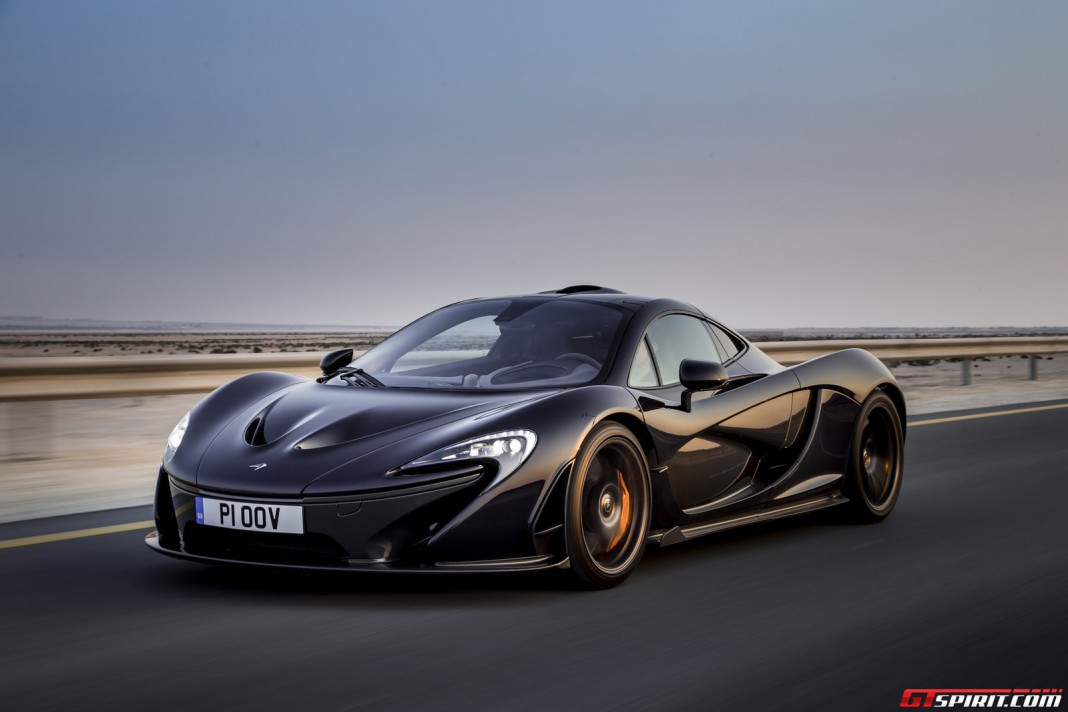
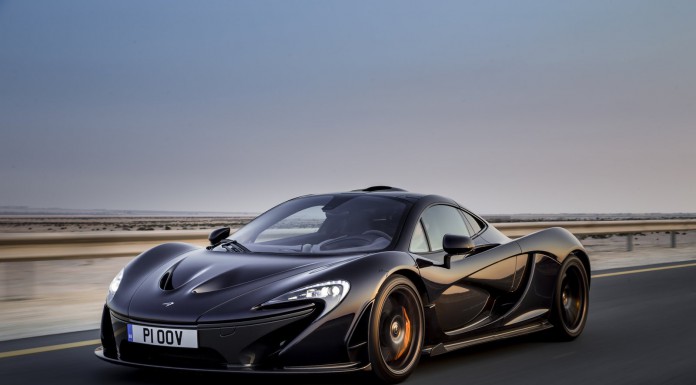
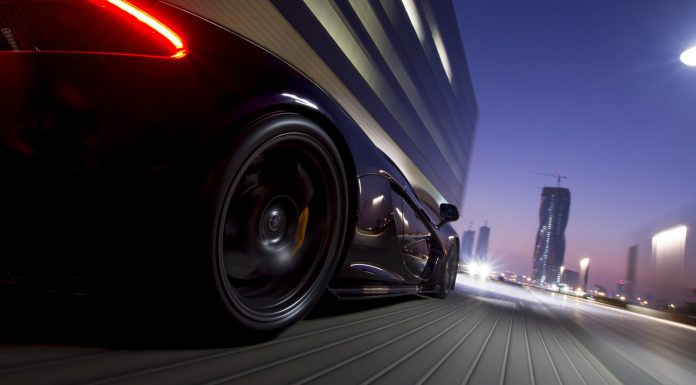















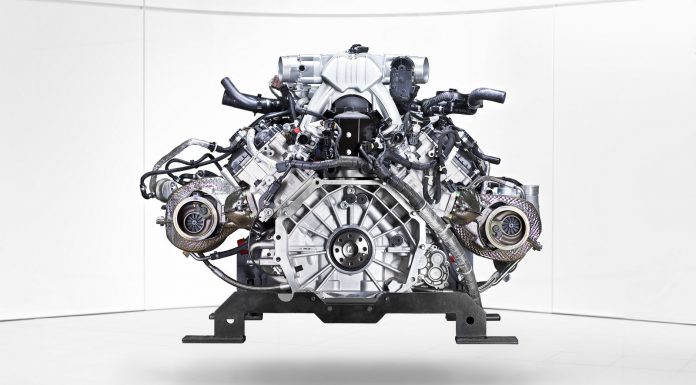
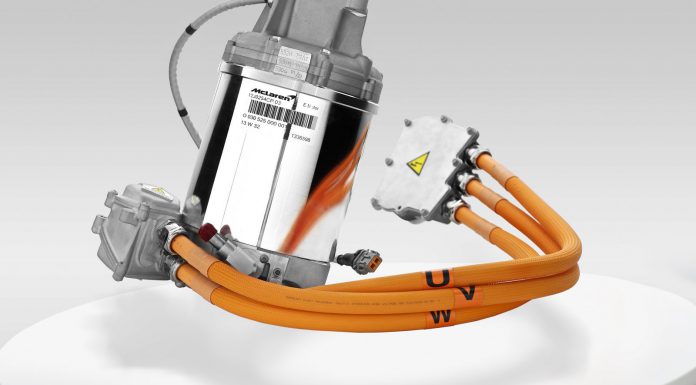










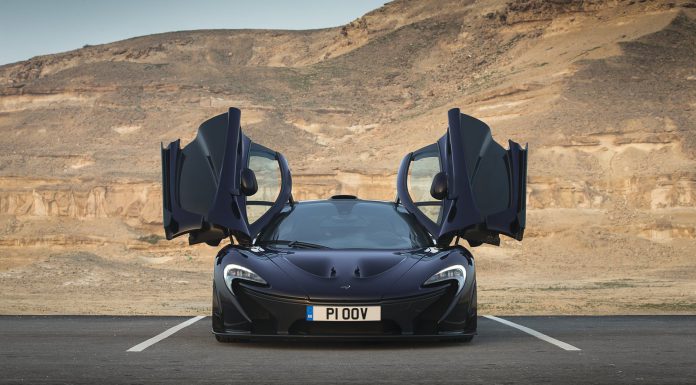
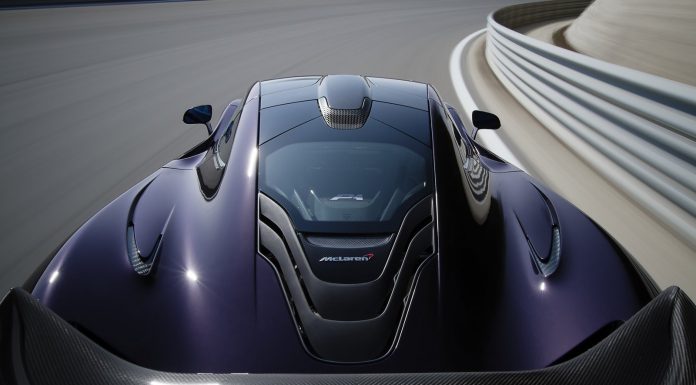

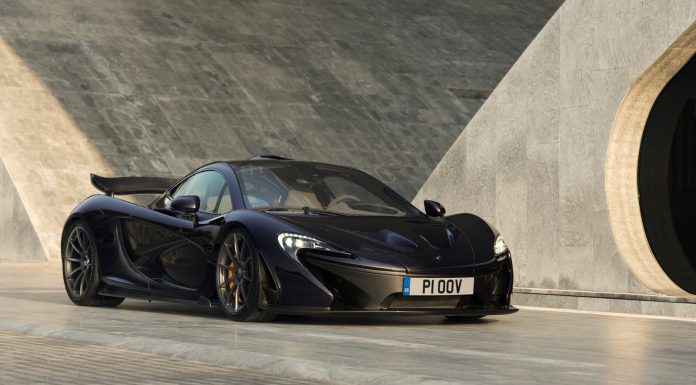
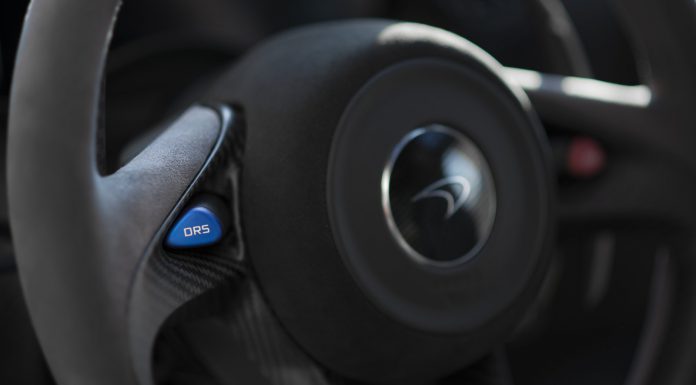
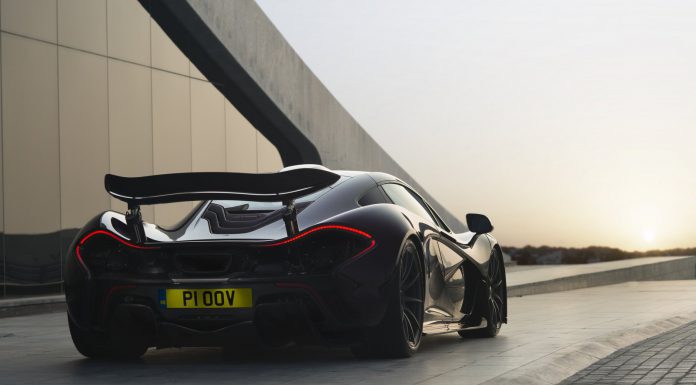

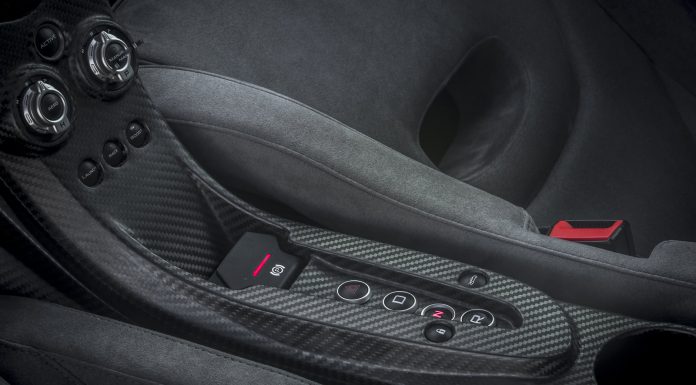
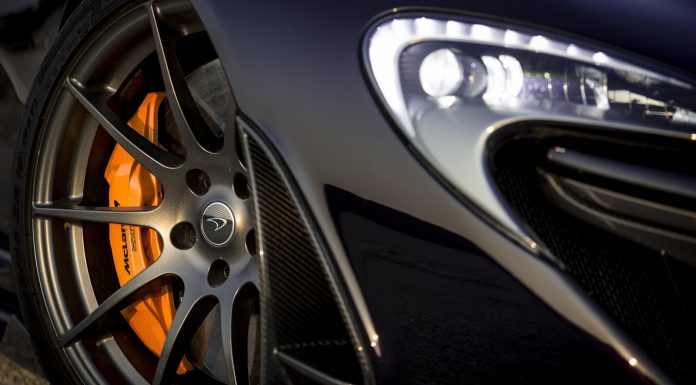
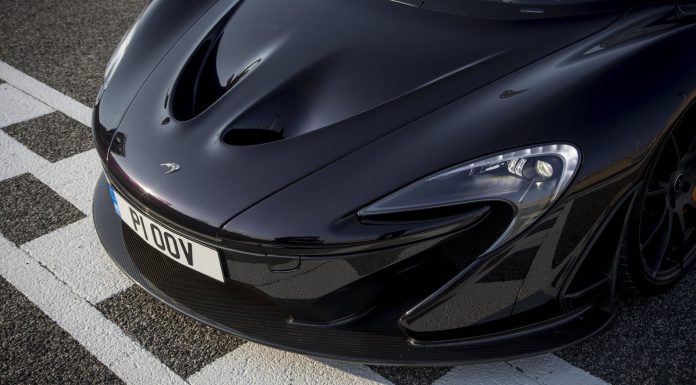



















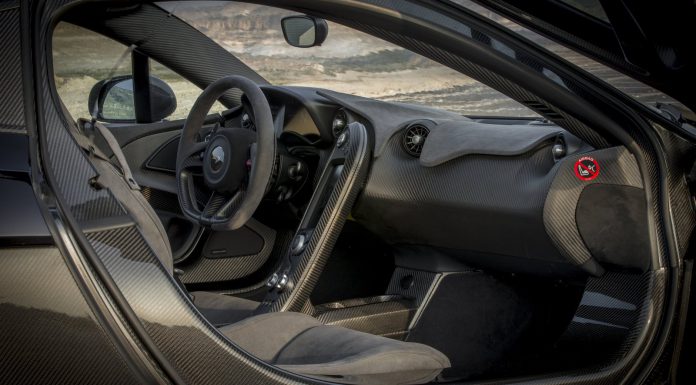
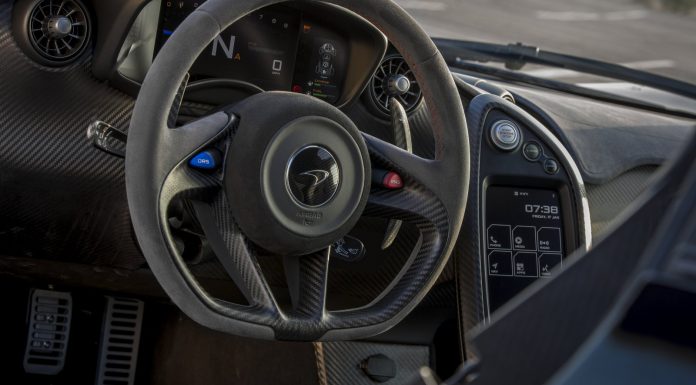















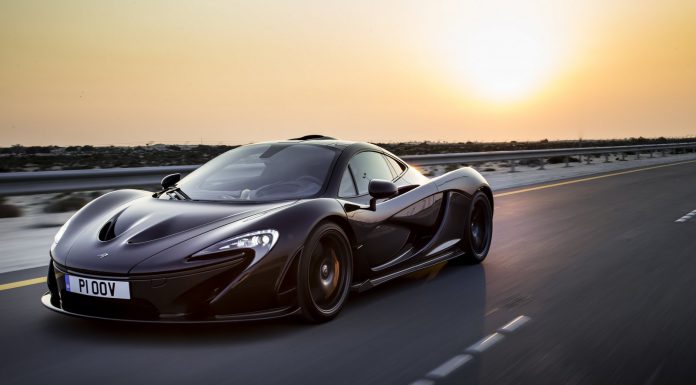
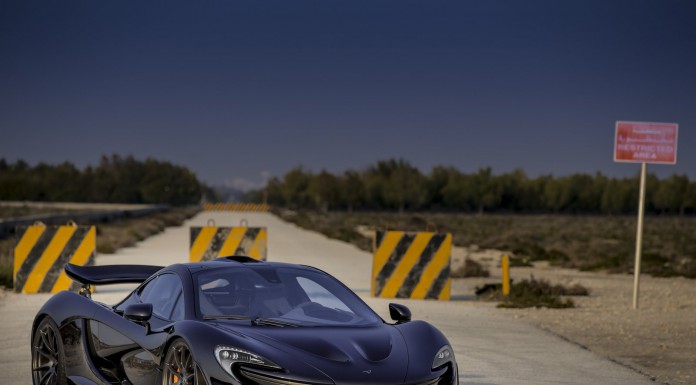
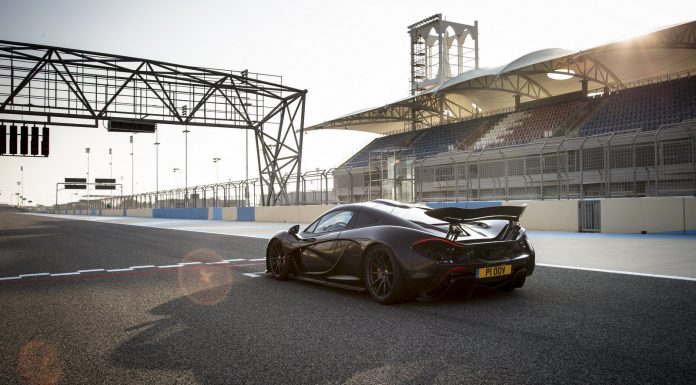













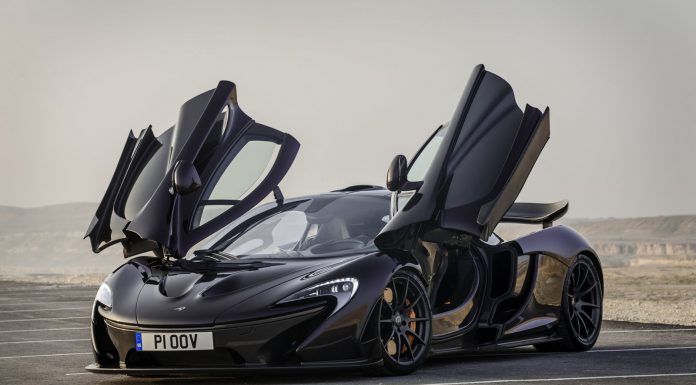
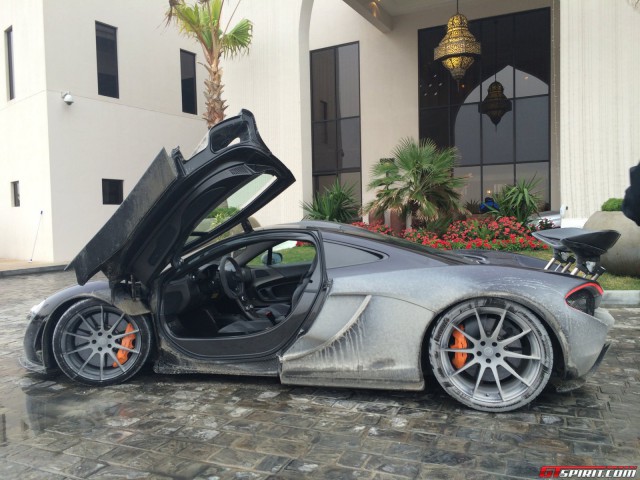




















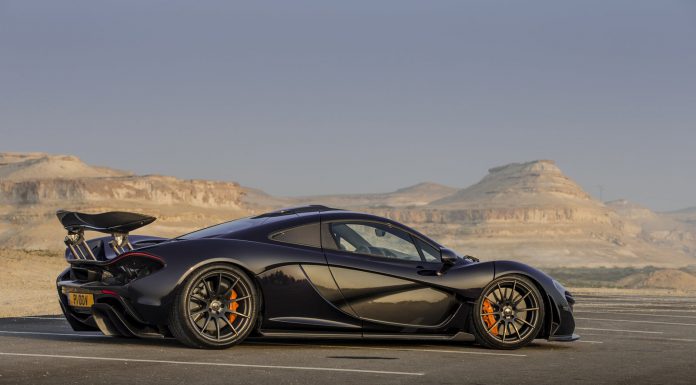










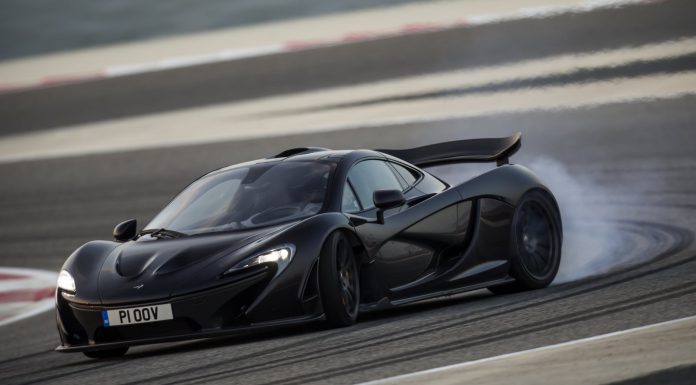
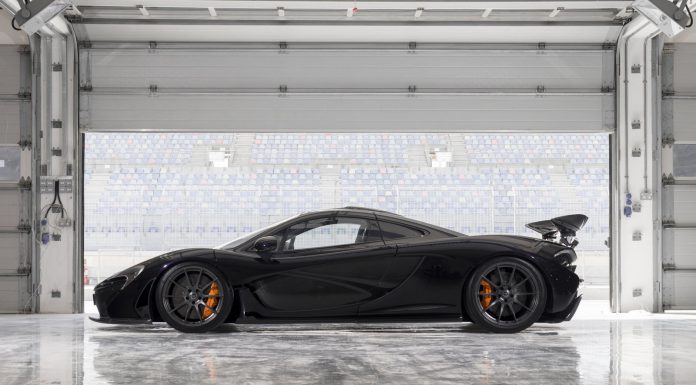
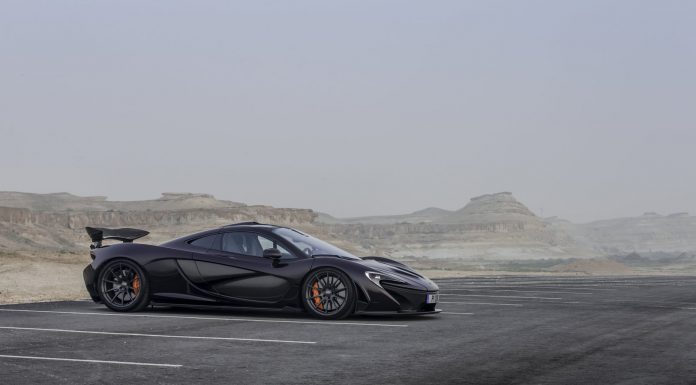











This is the most beautiful car on the planet. The fact that it's a performer also is irrelevant. Well done Stephenson. Takes a US designer to get those lines.
Hardly a typical American. He was born in Morocco and his parents are Norwegian and Spanish.
Excellent write-up. I had the opportunity to see it up close and it is truly a work of art. The attention to detail is amazing. What a weapon, what a car!
really great feeling during reading this article!
Whoooaaah, slick & smooth !
Need some work on the grammar, but other than that this is a very thorough review. Nice work!
This really helped with my assignment of researching a car and all its features!
Good Work!!!!